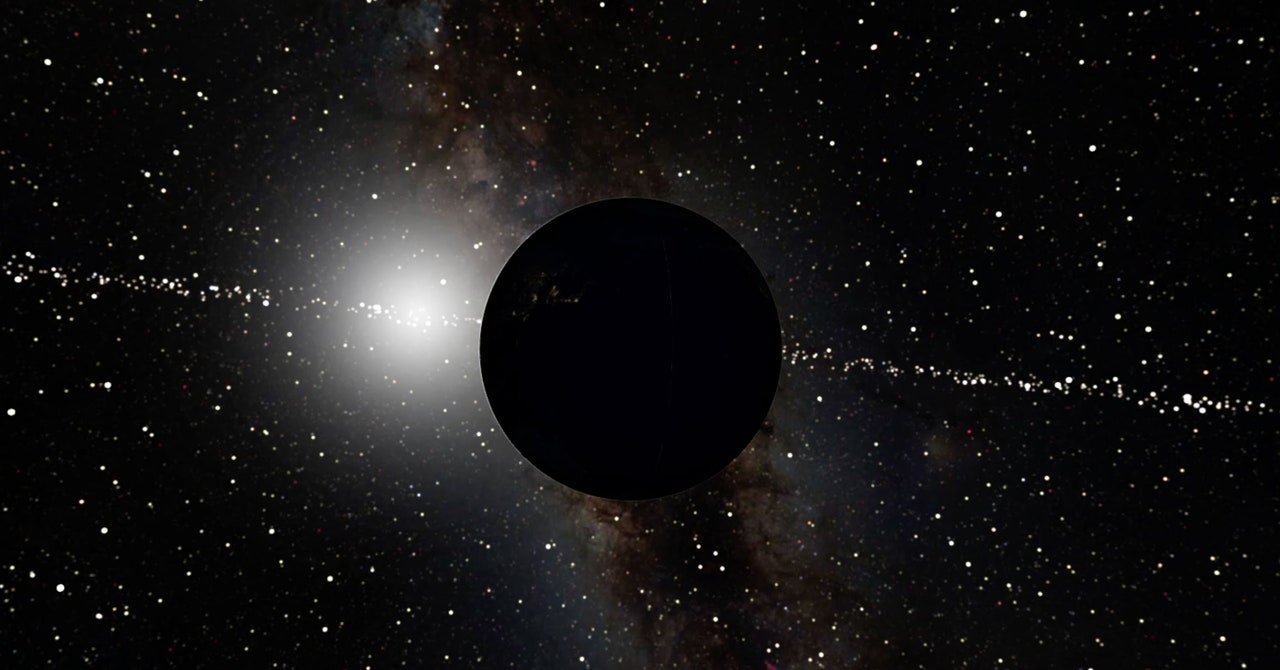
In the search for extraterrestrial life, we’re usually the ones doing the snooping. But Lisa Kaltenegger, an astronomer at Cornell University, wanted to know who out there might be watching us. “For whom would we be the aliens?” she asks.
So Kaltenegger enlisted the help of Jackie Faherty, an astrophysicist who works at Hayden Planetarium, part of the American Museum of Natural History, in New York City. Together, they took on the task of identifying stars that might host alien worlds where the residents—past, present, or future—would have a chance of detecting Earth as a transiting exoplanet. That means their planet would have just the right vantage point to observe a slight dip in the brightness of our sun as Earth crosses, or transits, in front of it. This is the most successful method we Earthlings use to find planets beyond our solar system as they orbit around their own host stars, creating tiny blips in the light we can see with astronomical instruments.
In June, Kaltenegger and Faherty announced their results in Nature with an extensive inventory of stars that have either had, or will later have, the proper orientation to discover our planet. They identified over 2,000 stars, using a time range from 5,000 years ago, when civilizations on Earth first began to bloom, to 5,000 years into the future. Not only does the study provide a resource to exoplanet hunters by pinpointing which stars they should pay attention to, it also gives a unique—and arguably, unsettling—viewpoint of our visibility to the rest of the universe. “I felt spied on a little bit,” Faherty says, remembering the uncanny sensation of being overexposed. “Do I want to be on a planet that can be found?”
“It’s a lovely piece of scientific poetry, to think about the way all of these objects are moving through space in this elaborate ballet,” says Bruce Macintosh, an astronomer at Stanford University who was not involved in the work. As the first study of its kind to take into account the changing vantage points of stars as they have shifted over time, it builds upon previous research that used only their current positions in the cosmos. “We can now construct movies of how the universe will look 5,000 years from now in the future, imagining all of the stars winking out as planets get in their way,” he says.
The new result was made possible thanks to the latest data release from the European Space Agency’s Gaia mission, an orbiting observatory with the ambitious goal of creating a three-dimensional map of the positions and velocities of a billion stars. Combined with the planetarium software Faherty uses to visualize stellar motions, she and Kaltenegger found exactly 2,034 stars within Earth’s transit zone. For nearly all of them, any alien beings living on planets circling these stars would, with mature enough technology, be able to detect Earth’s presence for at least a thousand years. “In the cosmic time scale, that’s a blip on the radar,” says Kaltenegger.
But for human lifetimes, she says, it gives astronomers ample time to develop the tools necessary to peer into other worlds. Kaltenegger and Faherty hope astronomers will use the catalog to find new planets, especially around stars that aren’t very well known or well studied. From there, large-scale missions like NASA’s future James Webb Space Telescope, set to launch by the end of the year, can be used to study planetary atmospheres and look for signs of life. “This is a treasure trove of planets just waiting to be discovered,” Kaltenegger says. “I’m looking forward to what people find.”


